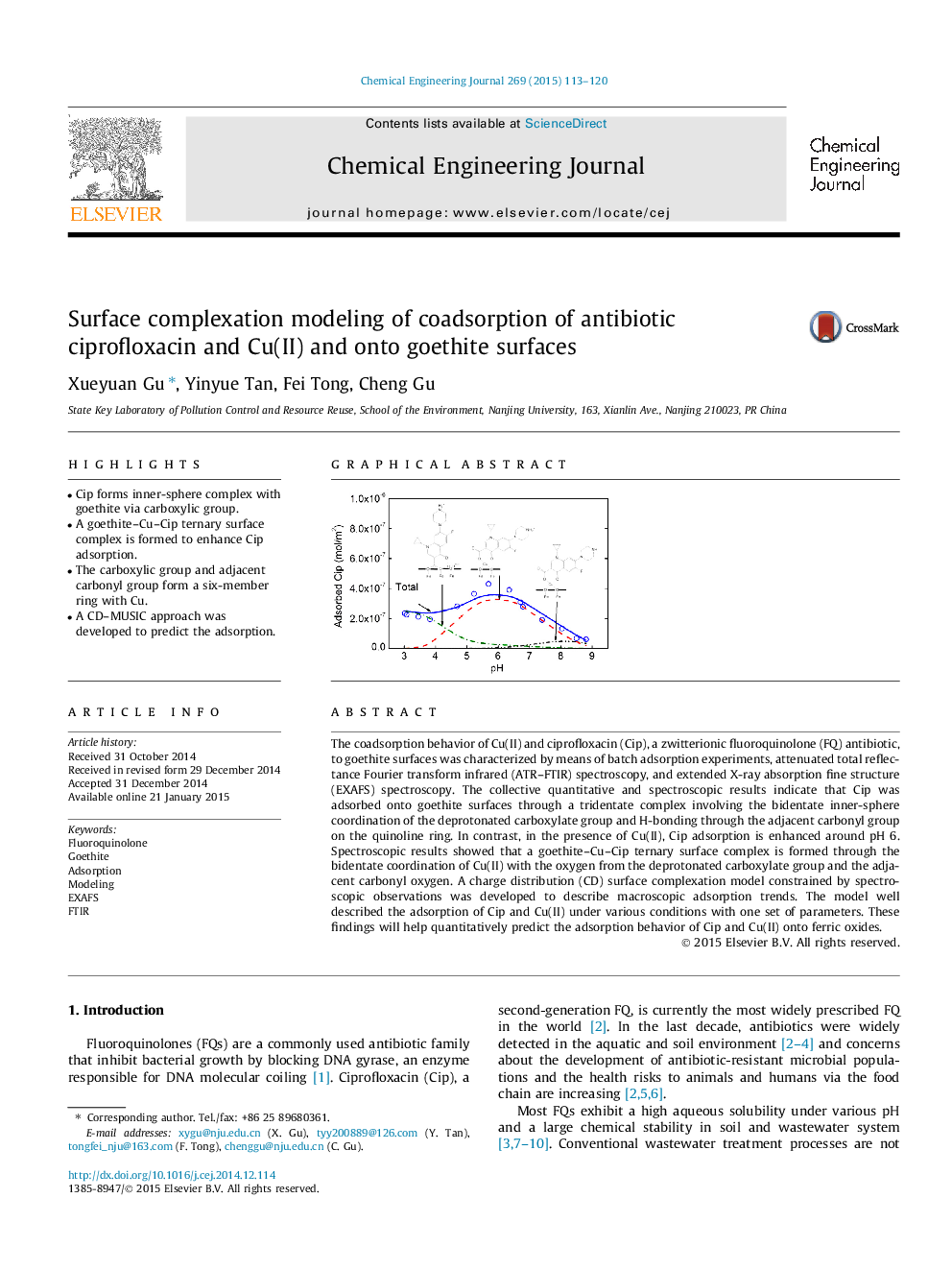| Article ID | Journal | Published Year | Pages | File Type |
|---|---|---|---|---|
| 146514 | Chemical Engineering Journal | 2015 | 8 Pages |
•Cip forms inner-sphere complex with goethite via carboxylic group.•A goethite–Cu–Cip ternary surface complex is formed to enhance Cip adsorption.•The carboxylic group and adjacent carbonyl group form a six-member ring with Cu.•A CD–MUSIC approach was developed to predict the adsorption.
The coadsorption behavior of Cu(II) and ciprofloxacin (Cip), a zwitterionic fluoroquinolone (FQ) antibiotic, to goethite surfaces was characterized by means of batch adsorption experiments, attenuated total reflectance Fourier transform infrared (ATR–FTIR) spectroscopy, and extended X-ray absorption fine structure (EXAFS) spectroscopy. The collective quantitative and spectroscopic results indicate that Cip was adsorbed onto goethite surfaces through a tridentate complex involving the bidentate inner-sphere coordination of the deprotonated carboxylate group and H-bonding through the adjacent carbonyl group on the quinoline ring. In contrast, in the presence of Cu(II), Cip adsorption is enhanced around pH 6. Spectroscopic results showed that a goethite–Cu–Cip ternary surface complex is formed through the bidentate coordination of Cu(II) with the oxygen from the deprotonated carboxylate group and the adjacent carbonyl oxygen. A charge distribution (CD) surface complexation model constrained by spectroscopic observations was developed to describe macroscopic adsorption trends. The model well described the adsorption of Cip and Cu(II) under various conditions with one set of parameters. These findings will help quantitatively predict the adsorption behavior of Cip and Cu(II) onto ferric oxides.
Graphical abstractFigure optionsDownload full-size imageDownload as PowerPoint slide
